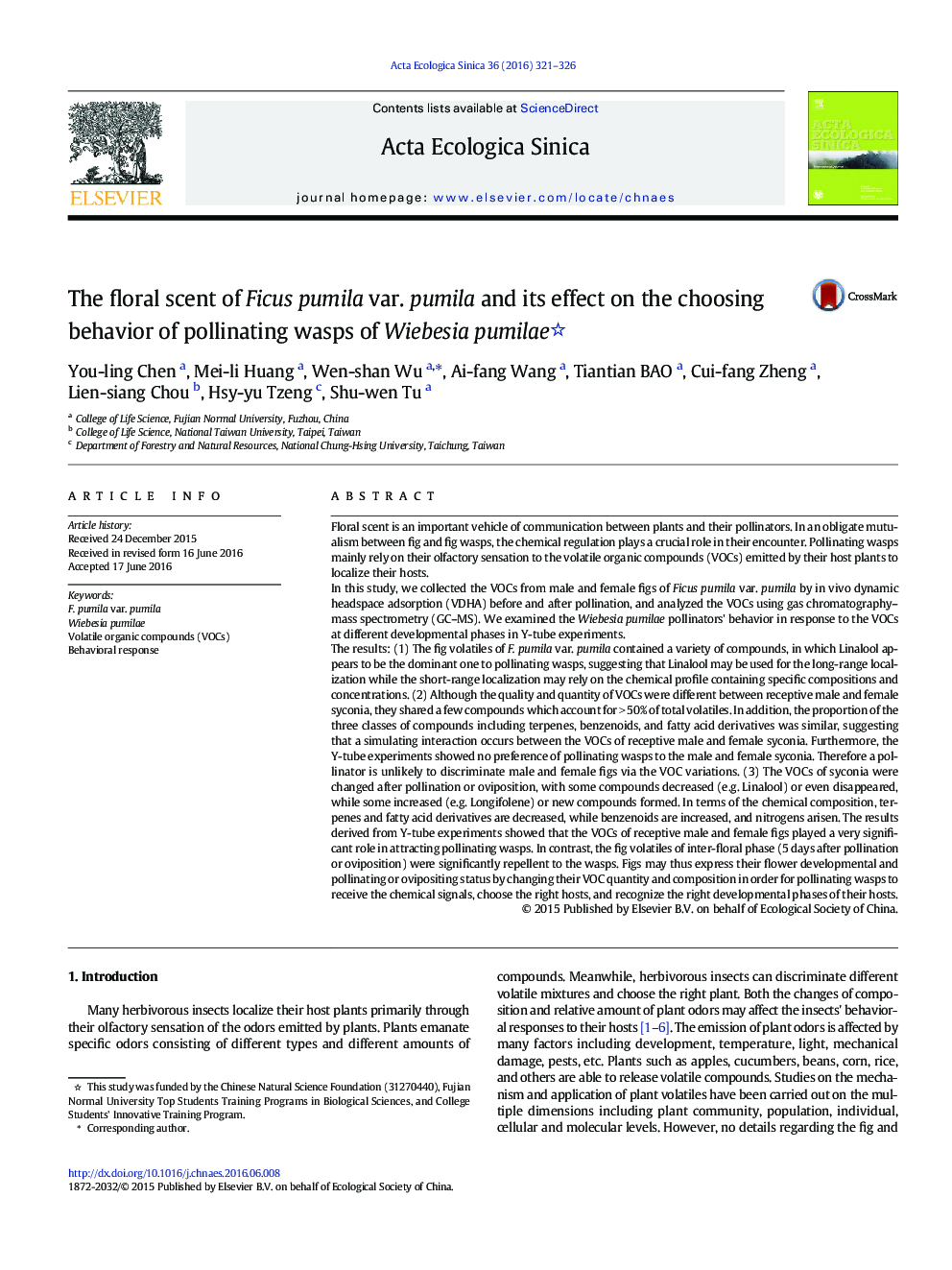| کد مقاله | کد نشریه | سال انتشار | مقاله انگلیسی | نسخه تمام متن |
|---|---|---|---|---|
| 4379718 | 1617678 | 2016 | 6 صفحه PDF | دانلود رایگان |
Floral scent is an important vehicle of communication between plants and their pollinators. In an obligate mutualism between fig and fig wasps, the chemical regulation plays a crucial role in their encounter. Pollinating wasps mainly rely on their olfactory sensation to the volatile organic compounds (VOCs) emitted by their host plants to localize their hosts.In this study, we collected the VOCs from male and female figs of Ficus pumila var. pumila by in vivo dynamic headspace adsorption (VDHA) before and after pollination, and analyzed the VOCs using gas chromatography–mass spectrometry (GC–MS). We examined the Wiebesia pumilae pollinators' behavior in response to the VOCs at different developmental phases in Y-tube experiments.The results: (1) The fig volatiles of F. pumila var. pumila contained a variety of compounds, in which Linalool appears to be the dominant one to pollinating wasps, suggesting that Linalool may be used for the long-range localization while the short-range localization may rely on the chemical profile containing specific compositions and concentrations. (2) Although the quality and quantity of VOCs were different between receptive male and female syconia, they shared a few compounds which account for > 50% of total volatiles. In addition, the proportion of the three classes of compounds including terpenes, benzenoids, and fatty acid derivatives was similar, suggesting that a simulating interaction occurs between the VOCs of receptive male and female syconia. Furthermore, the Y-tube experiments showed no preference of pollinating wasps to the male and female syconia. Therefore a pollinator is unlikely to discriminate male and female figs via the VOC variations. (3) The VOCs of syconia were changed after pollination or oviposition, with some compounds decreased (e.g. Linalool) or even disappeared, while some increased (e.g. Longifolene) or new compounds formed. In terms of the chemical composition, terpenes and fatty acid derivatives are decreased, while benzenoids are increased, and nitrogens arisen. The results derived from Y-tube experiments showed that the VOCs of receptive male and female figs played a very significant role in attracting pollinating wasps. In contrast, the fig volatiles of inter-floral phase (5 days after pollination or oviposition) were significantly repellent to the wasps. Figs may thus express their flower developmental and pollinating or ovipositing status by changing their VOC quantity and composition in order for pollinating wasps to receive the chemical signals, choose the right hosts, and recognize the right developmental phases of their hosts.
Journal: Acta Ecologica Sinica - Volume 36, Issue 5, October 2016, Pages 321–326
